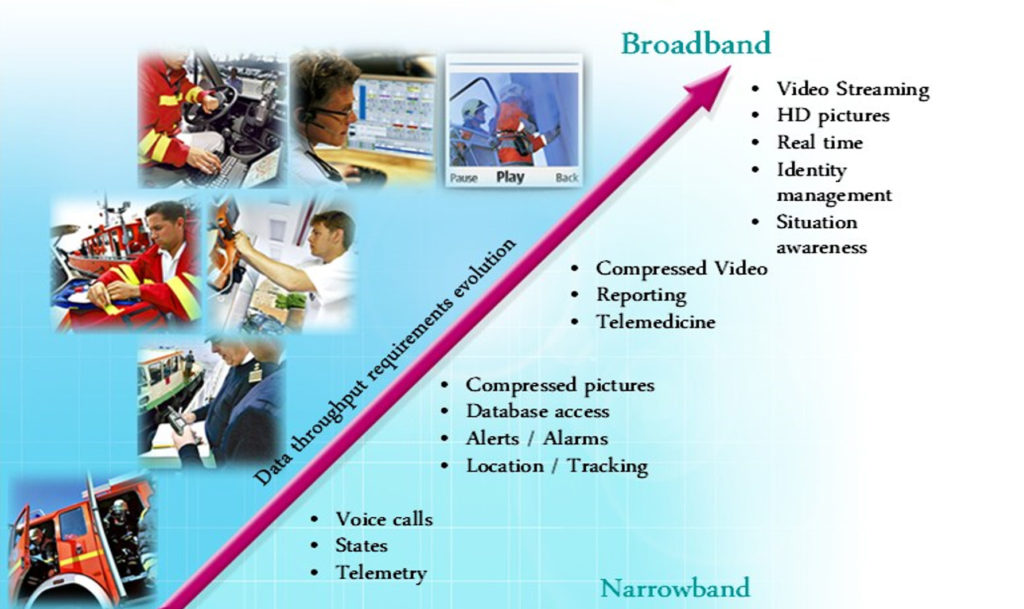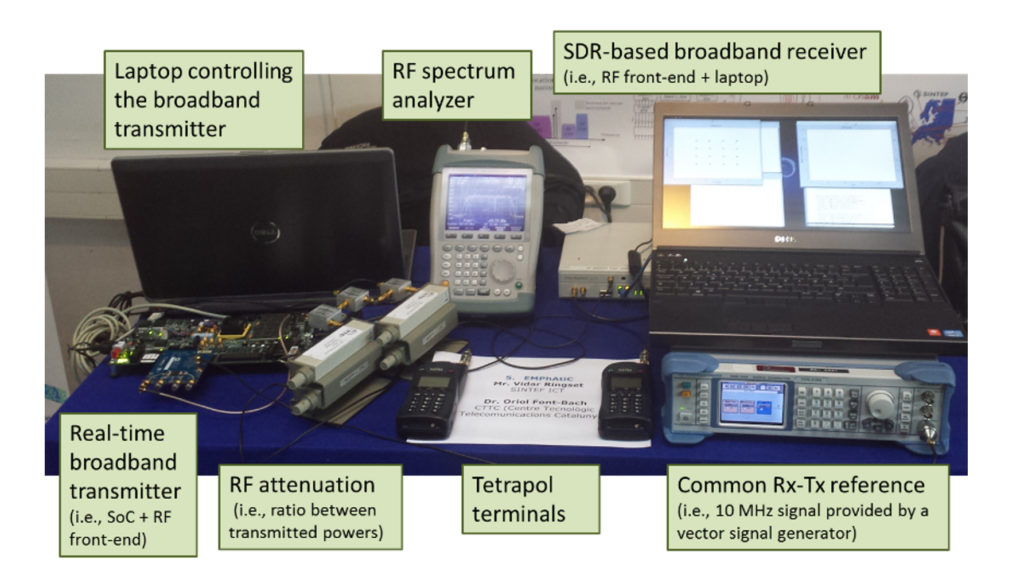Enhanced Multicarrier Techniques for Professional Ad-Hoc and Cell-Based Communications
The goal of EMPhAtiC was to develop, evaluate and demonstrate the capability of enhanced multicarrier techniques to make better use of the existing radio frequency bands in providing broadband data services in coexistence with narrowband legacy services. Our main emphasis was on filterbank based multicarrier (FB-MC) waveforms for utilizing effectively the available fragmented spectrum in such heterogeneous environments.
The EMPhAtiC consortium had a strong expertise in the design of practical TETRA and ETSI BRAN systems and a very good track record in the development of FB-MC data transmission systems. It consisted of 3 manufacturers -Thales, Cassidian (France), Sintef (Norway)- 3 R&D centers -CTTC (Spain), CNAM (France), CTI (Greece)- 2 SMEs -Magister (Finland), Bitgear (Serbia)- and 6 Universities -ITU, TUM (Germany), UCL (Belgium), UNS (Serbia), TUT (Finland)-.
Today, Professional Mobile Radio (PMR) and public protection and disaster relieve (PPDR) systems are used mainly for voice communications and low rate data transmissions. This is due to the technological limitations of currently deployed systems, which only use a small frequency bandwidth and have thus quite limited throughput. However, there exists a growing demand for important services such as video conferencing or high speed data transfer that require essentially higher data throughputs, which cannot possibly be supported by current PMR/PPDR systems. The objective of EMPhAtiC was to propose an innovative technological solution allowing increased data throughputs for Public Safety radio-communication systems, in order to satisfy emerging new data service needs in cohabitation with existing networks in the same frequency bands.

The project proposed a viable technological PHY-MAC solution that was able to support the emerging broadband PMR services in spectrum coexistence with legacy narrowband transmissions. The main technological component was a filterbank multicarrier waveform, which presents strong frequency selectivity therefore allows for spectral coexistence. The proposed filterbank waveform was shown to outperform other alternative multicarrier signals (including several methods for sidelobe suppression in CP‐OFDM) in terms of spectral containment. Using the technology that was developed in the project, we were able to experimentally demonstrate over-the-air spectral coexistence of a filterbank-based wideband radio signal with conventional Tetrapol signals using real signals and commercial equipment.

From the technical perspective, the EMPhAtiC project was key in introducing strategic improvements to the physical layer (PHY) in the domain of mobile wireless broadband signals, which will certainly have a substantial impact that will go far beyond the project context. So, even if the main interest of the industrial partners involved in the EMPhAtiC project was PMR, the technological advances of the EMPhAtiC project can be globally applicable to all mobile broadband wireless and wired systems. Thanks to the proposed efficient filterbank processing structure, the EMPhAtiC project made a major contribution towards the next generation PHY layer which improves the data throughput and cohabitation with existing networks.
The project will therefore strengthen European research in advanced technologies based on filterbank based communications, flexible spectrum use and enhanced coexistence of existing and new communication signals in heterogeneous radio spectrum environments.
